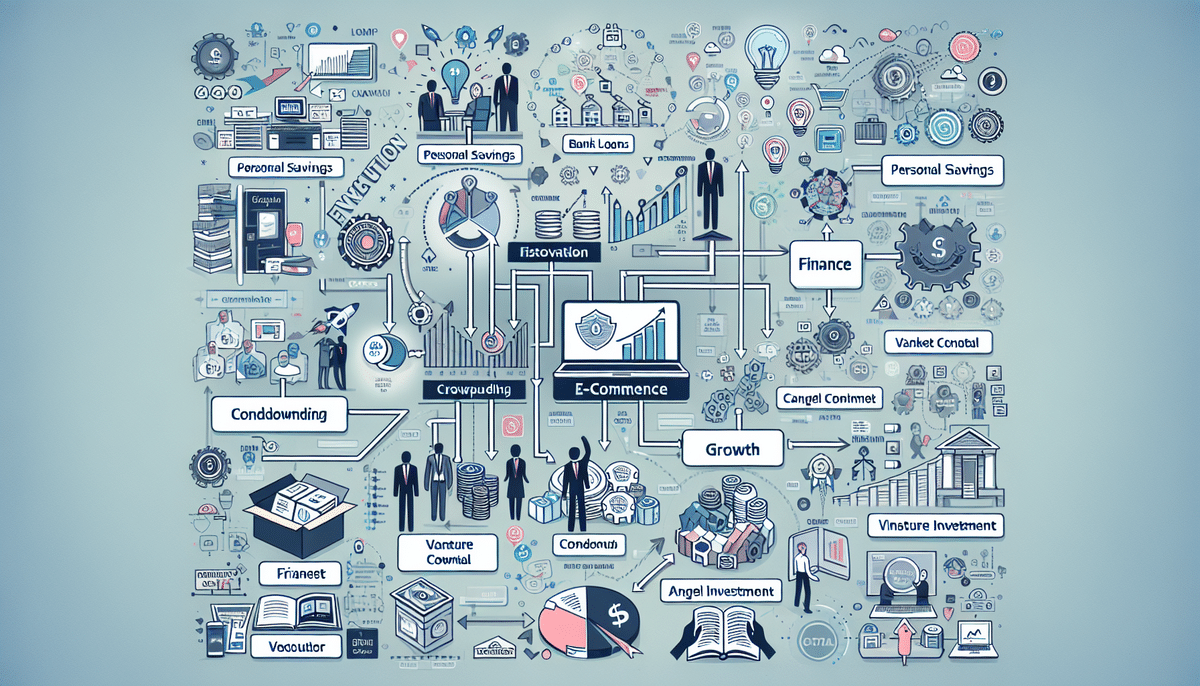Sustainability has become a key consideration for businesses across all sectors in recent years. In this era of heightened corporate social responsibility, companies are increasingly looking to integrate sustainable practices into their supply chains. One tool that has emerged as a valuable resource for companies in this pursuit is the Global Reporting Initiative (GRI).
What is GRI and why does it matter for your supply chain?
GRI is an international organization that has developed a comprehensive set of sustainability reporting standards. These standards provide a framework for companies to report on their sustainability performance to stakeholders including investors, customers, employees, and suppliers. By adhering to GRI standards, companies can demonstrate their commitment to sustainable practices and gain important insights into their environmental, social, and governance (ESG) performance. This is important because studies show that companies that prioritize sustainability outperform their peers in the long run.
One of the key benefits of using GRI standards in your supply chain is that it can help you identify areas where you can improve your sustainability performance. For example, by tracking your greenhouse gas emissions or water usage, you can identify opportunities to reduce your environmental impact and save costs. Additionally, by reporting on your social and labor practices, you can ensure that your suppliers are meeting ethical standards and treating their workers fairly.
Another advantage of using GRI standards is that it can help you build trust with your stakeholders. By providing transparent and comprehensive sustainability reports, you can demonstrate your commitment to responsible business practices and build a positive reputation. This can be especially important for companies that operate in industries with high social and environmental risks, such as mining or agriculture.
Exploring the benefits of implementing GRI in your supply chain
Implementing GRI standards in your supply chain can have many benefits. For one, it can help you to identify areas for improvement in your sustainability practices, such as reducing greenhouse gas emissions and water consumption. Additionally, GRI reporting can improve your company's reputation by demonstrating to customers, investors, and other stakeholders that you are committed to sustainable practices. Finally, GRI reporting can help you to manage risk by identifying potential ESG-related risks that could impact your business operations.
Another benefit of implementing GRI in your supply chain is that it can help you to stay ahead of regulatory requirements. As governments around the world continue to implement stricter environmental and social regulations, companies that have already implemented GRI standards will be better positioned to comply with these regulations. This can help to avoid costly fines and penalties, as well as potential damage to your company's reputation.
How to integrate GRI principles into your existing supply chain management system
Integrating GRI principles into your existing supply chain management system can be a daunting task, but it is achievable with the right approach. The first step is to assess your current level of sustainability performance and identify areas for improvement. Then, invest in the right tools and technologies to help you measure and report on your performance, such as sustainability software and data management platforms. Finally, establish policies and procedures to ensure compliance with GRI standards and engage suppliers and other stakeholders throughout the process.
It is important to note that integrating GRI principles into your supply chain management system is not a one-time task, but an ongoing process. Regular monitoring and evaluation of your sustainability performance and continuous improvement efforts are necessary to ensure long-term success. Additionally, consider collaborating with other organizations and industry groups to share best practices and learn from each other's experiences. By taking a proactive approach to sustainability, you can not only meet GRI standards but also create a more resilient and responsible supply chain.
Case studies: Real-world examples of companies that have successfully implemented GRI in their supply chains
Many companies have successfully implemented GRI in their supply chains and are reaping the benefits. For example, Unilever has implemented GRI standards and now reports on more than 60 sustainability indicators across its supply chain, helping to reduce its carbon emissions and improve its water usage. Similarly, Nestle has integrated GRI standards into its sustainability reporting, helping to improve transparency and accountability across its extensive supply chain. These companies serve as examples of how GRI reporting can improve sustainability practices across entire supply chains.
In addition to Unilever and Nestle, other companies have also successfully implemented GRI in their supply chains. For instance, Walmart has integrated GRI standards into its sustainability reporting, which has helped the company to reduce its carbon footprint and improve its energy efficiency. Another example is Coca-Cola, which has implemented GRI standards to improve its water stewardship practices and reduce water usage across its supply chain.
Furthermore, implementing GRI standards in supply chain management can also lead to cost savings for companies. By identifying areas where sustainability practices can be improved, companies can reduce waste, increase efficiency, and ultimately save money. This is exemplified by companies like IKEA, which has implemented GRI standards in its supply chain management and has seen significant cost savings as a result.
The role of transparency and accountability in GRI implementation
Transparency and accountability are key components of GRI reporting. Without transparency, stakeholders cannot adequately assess a company's sustainability performance. Similarly, accountability is necessary to ensure that a company is taking responsibility for its sustainability practices and addressing areas for improvement. By prioritizing transparency and accountability, companies can leverage GRI reporting to gain trust from stakeholders and improve their long-term sustainability performance.
One way that companies can increase transparency in their GRI reporting is by providing detailed information about their supply chain. This includes information about suppliers' sustainability practices, as well as any risks or challenges that may arise in the supply chain. By sharing this information, companies can demonstrate their commitment to responsible sourcing and help stakeholders understand the full impact of their operations.
In addition to transparency and accountability, collaboration is also an important factor in successful GRI implementation. Companies can work with stakeholders, including employees, customers, and community members, to identify sustainability priorities and develop strategies for improvement. By involving a range of perspectives and expertise, companies can ensure that their sustainability efforts are effective and aligned with stakeholder expectations.
The potential risks and challenges associated with GRI implementation
Implementing GRI reporting standards can also come with challenges and risks. For example, collecting and reporting on sustainability data can be time-consuming and resource-intensive, particularly for companies with large and complex supply chains. Additionally, GRI reporting can expose areas where a company may be falling short on sustainability performance, potentially leading to reputational and financial risks. To mitigate these risks, companies must invest in the right tools and technologies to ensure compliance and communicate their sustainability efforts to stakeholders.
Another challenge associated with GRI implementation is the lack of standardization in reporting. While GRI provides guidelines for reporting, there is still room for interpretation and variation in how companies report their sustainability data. This can make it difficult for stakeholders to compare and evaluate the sustainability performance of different companies. To address this challenge, GRI is working to develop more standardized reporting frameworks and metrics.
Finally, GRI reporting can also be limited by the availability and quality of data. Some companies may not have access to the necessary data to report on certain sustainability indicators, or the data they have may be incomplete or unreliable. This can make it difficult to accurately assess a company's sustainability performance and progress over time. To overcome this challenge, companies must work to improve their data collection and management processes, and collaborate with suppliers and other stakeholders to gather the necessary data.
How to measure and track the impact of GRI on your supply chain performance
Measuring and tracking the impact of GRI on your supply chain performance is critical to understanding the effectiveness of your sustainability practices. To do this, companies should establish key performance indicators (KPIs) and monitor these metrics over time. Additionally, engaging with suppliers and other stakeholders can help to identify areas for improvement and track progress over time. Finally, leveraging sustainability software and data management platforms can help to streamline data collection and reporting.
Comparing different sustainability reporting frameworks: Why choose GRI over others?
While there are many different sustainability reporting frameworks available, GRI is widely regarded as the gold standard. This is because it provides a comprehensive and standardized approach to sustainability reporting that is recognized by stakeholders the world over. Additionally, GRI reporting is grounded in scientific research and is regularly updated to reflect the latest best practices in sustainability reporting. Finally, GRI is widely adopted across different industries, which means that companies can use the same reporting standards regardless of sector.
The importance of stakeholder engagement in successful GRI implementation
Stakeholder engagement is critical to successful GRI implementation. This is because stakeholders have a vested interest in a company's sustainability performance and can share important insights on areas for improvement. To engage stakeholders in the GRI reporting process, companies should establish communication channels and regularly solicit feedback from stakeholders. Additionally, companies should be transparent about their sustainability practices and communicate progress on sustainability goals to build trust with stakeholders.
Best practices for communicating your company's GRI efforts to stakeholders
Communicating your company's GRI efforts to stakeholders is critical to building trust and demonstrating the value of sustainable practices. To effectively communicate your company's GRI efforts, begin by establishing a clear and compelling sustainability narrative that outlines your company's sustainability goals and progress to date. Then, use a variety of communication channels to reach different stakeholders, such as social media, press releases, and investor presentations. Finally, be transparent about your sustainability performance and provide regular updates on progress towards sustainability goals.
Future trends and developments in GRI reporting and how they will affect your supply chain
GRI reporting is constantly evolving to reflect changing sustainability trends and best practices. This means that companies that implement GRI reporting today must be prepared to adapt to future changes in reporting standards. Some of the most important trends to watch in GRI reporting include the increased focus on social sustainability, the rise of artificial intelligence and other technologies in data collection and reporting, and the expectation that companies will report on their sustainability performance throughout their entire supply chain. Companies that stay ahead of these trends will be well-positioned to succeed in the sustainability landscape of the future.
In conclusion, implementing GRI standards in your supply chain can have many benefits, including improved sustainability practices, increased transparency and accountability, and reduced risk. By following best practices for integrating GRI into your supply chain management system and engaging stakeholders throughout the process, you can leverage GRI reporting to improve your long-term sustainability performance. Additionally, staying abreast of trends in GRI reporting can help you to identify future opportunities for sustainability improvement and stay ahead of the curve in this ever-evolving landscape.









